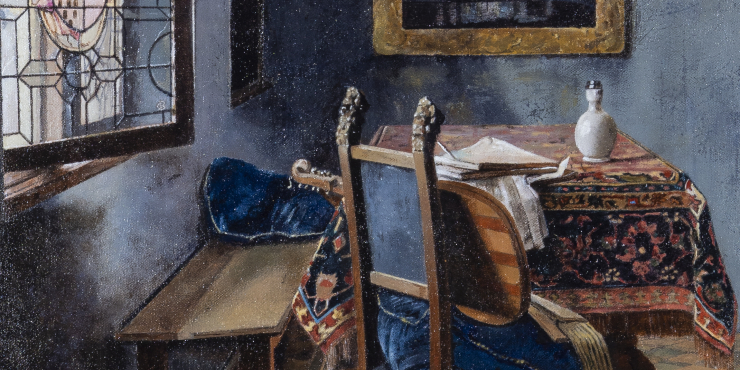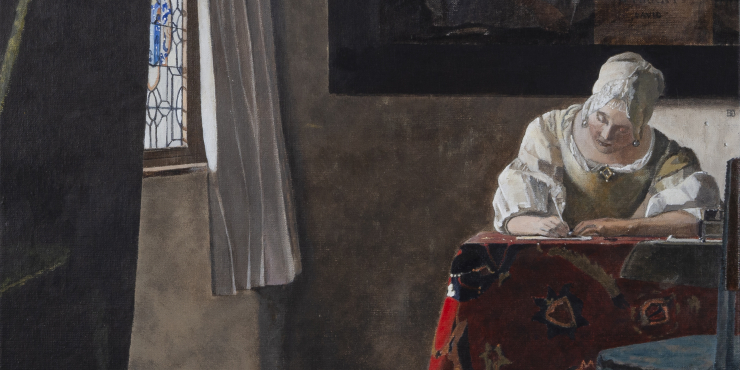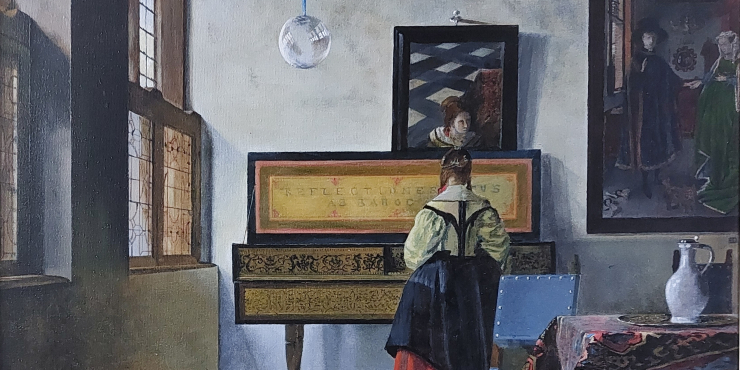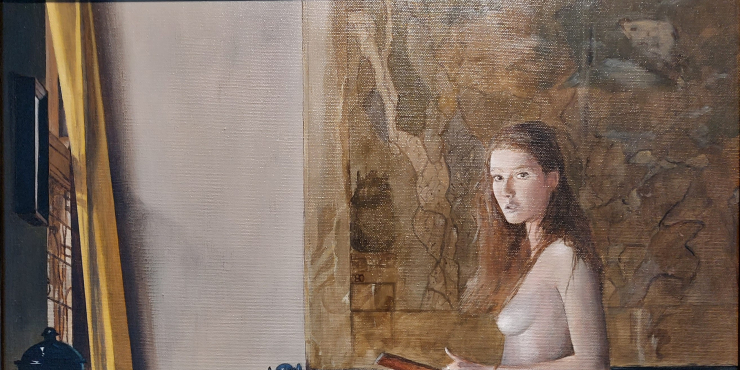- Home
- Vermeer with a twist
VERMEER WITH A TWIST
As a great admirer of the works of Johannes Vermeer, I am driven to create one or more paintings that pay tribute to the great master of light, shadow and stillness in a contemporary way.
Johannes Vermeer (1632-1675) spent his entire life in Delft, in the aftermath of the Golden Age. A total of 37 paintings have been assigned to Vermeer, two of which are highly controversial. The small size of his oeuvre – he made on average barely more than two canvases per year – is explained by the fact that he painted very little for the art market, but especially for patrons. It is almost certain that he, like his father, was active as an art dealer. He probably made more money selling other paintings than his own work. In any case, Vermeer was certainly not underestimated as a painter in his days and in his best time he was at the top of the Delft art market in terms of prices. He was twice elected chief of the St. Luke's Guild, the brotherhood of Delft painters.
In 1653 he married Catherine Bolnes. He had 15 children with her (four of whom died young) and was able to support his family without any problems. The fact he moved with his family to the house of his wealthy mother-in-law from 1660 onwards will have contributed to this. Vermeer's last years were overshadowed by a dramatic deterioration in his financial situation. The war with France had disastrous consequences. In the disaster year 1672 he no longer sold paintings and the art market collapsed. Vermeer fell into gloom and died on December 15, 1675. After his death, hardly anyone knew him. It was not until 1860 that he was rediscovered and his star rose to spectacular heights in a few decades. The French art critic and writer Etienne-Joseph Théophile Thoré (1807 - 1869) called him "the sphinx of Delft", the great unknown master who had appeared out of nowhere and, apart from some paintings, left no trace. The fascination for Vermeer is due to the idea that we know almost nothing about his life, and that we cannot fathom his paintings. The interpretations of his works vary enormously. It is now generally assumed that, in addition to perfect representations of scenes from the daily life of the well-off bourgeois, there are also symbolic and hidden meanings in Vermeer's paintings.
One of the ways that Vermeer used on his canvases as an instrument of interpretation and symbolism are the paintings IN his paintings that mostly appear on the opposite central wall in many of his interiors. His mother-in-law Maria Thins owned many paintings of that time and Vermeer made use of them.
In this way I had the idea to repaint some famous vermeer interiors, to make some modifications, and also to "replace" the painting in the painting with another well-known work.




